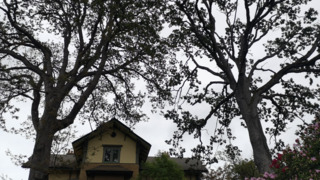IBPOC Art Histories
Just as art is inevitably intermingled with culture, it is also intertwined with history. For Primary Colours/Couleurs primaires, we foreground the history of the last 500 years, the history of colonialism in Canada and its impact on how we understand art. For Indigenous artists, that means imagining, learning, renewing and in some case innovating art forms that have existed here for thousands of years.
For BPoC artists, that means being aware of how our skins are history - how racism has sorted much of what our families brought here into silos called ‘primitive’, ‘folk’, ‘ethnic’ or ‘craft’. This kind of delineation has, until recently plagued the meanings of Indigenous art as well.
It is not easy to find useful, accurate or comprehensive information on art forms in Canada that remain mostly invisible. What are the multiple artistic traditions on the land called Canada? Our libraries are stocked - courtesy of capital ‘M’ Multiculturalism - with books, videos, papers, audio records of the various peoples that have lived on this land for millennia and those who have immigrated here. But what about their art?
We also put a priority on the post World War 2 period from 1950 to 1985 and then forward to 2025. From 1950 to 1985, the Canadian government made a concrete decision to begin a cultural nation-building initiative. During this time most of our major arts infrastructure was built - regional theatres, media production venues and the regional public gallery system. Also many national arts organizations were formed, including the Canada Council for the Arts.
Almost all of this infrastructure focussed on Eurocentric art forms - ballet; European symphonic music and opera; derivations of British and French theatre. During this time, IBPoC artists were mostly ignored because their work was not ‘fine art’. We want to accentuate the pioneers whose work broke through into the mainstream and/or whose arts activism has changed the ongoing definitions of how we understand something called Canadian culture(s).
* NOTE: All nomenclature referring to racialized persons can be problematic. This naming can be incomplete, imprecise and it changes with the times. IBPoC is a contemporary term that refers to Indigenous, Black and People of Colour. Its origins are in the USA where the term is expressed as BIPOC. This formulation is sometimes used in Canada as well. We strive to consistently place ‘First Peoples first’, so we are using the Indigenous-first acronym - IBPoC.
The term ‘People of Colour’ has a long, somewhat contested, history going back over 200 years. The current usage stems from its 1970’s and 80’s renewal in the USA. It was revitalized - as a less insulting term for ‘non-white’ - as a way of describing all peoples who are racialized by white supremacy, and therefore who are subjected to racism. Significantly, it included Indigenous people who had been named as Native Americans in the territory known as USA.
In Canada, Indigenous people immediately rejected this conflation, not wishing to be included in the term ‘People of Colour’ nor even any notion of Canada’s Multiculturalism policies, for example, the top-down official expression of the Canadian government - visible minority.
Consequently, the more recent term IBPoC was created as a new formulation of these intertwined histories of racism. Black activists and academics have rightly insisted that the heinous history of the Atlantic slave trade to the Americas gives a resonance to Black histories that cannot be easily lumped in with the phrase, People of Colour.
it remains to be seen whether the POC formulation will fall into disuse (just as the mainstream starts to be comfortable with it!) because other racial groups with specific, separate histories will also not want to be mixed together in this term. For now, IBPoC (or in the USA - BIPOC) has a potent currency.

Generating Knowledge
Charles Campbell
Sixteen years ago I arrived as an uninvited guest on Lekwungen territory. Not that I would have used those words at t...